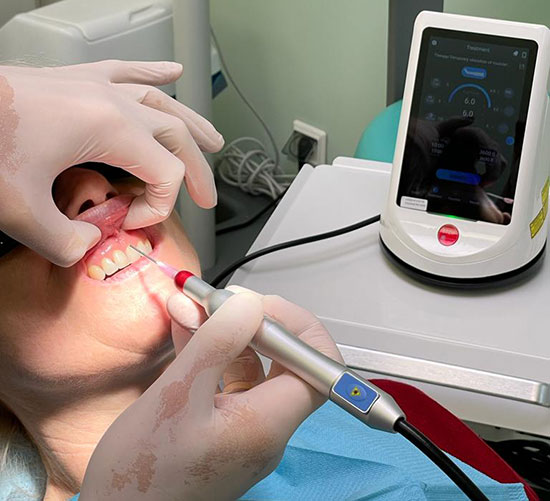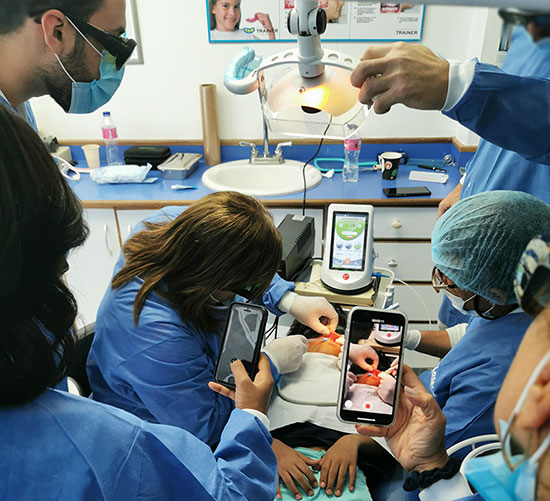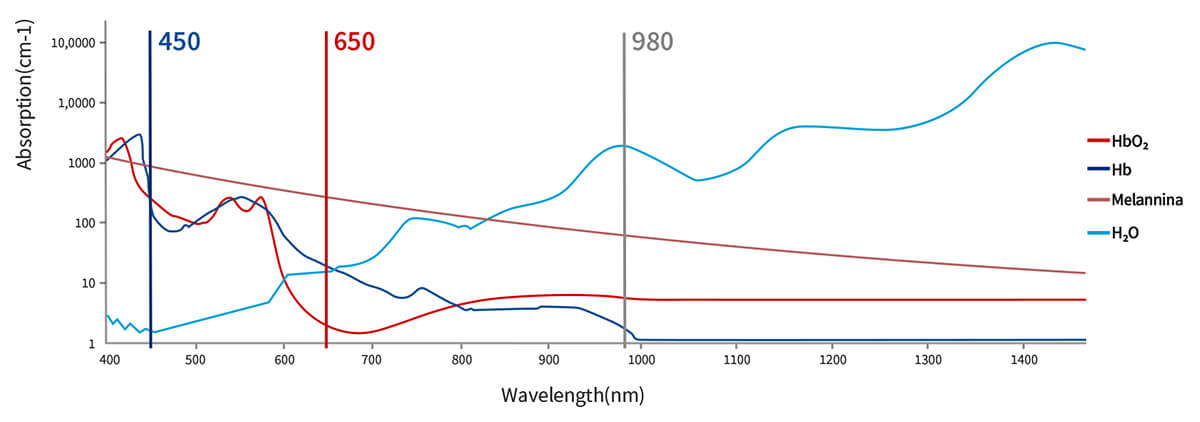Dental Diode Laser in Laser Dentistry
Laser dentistry is the use of lasers to treat a number of different dental conditions. It became commercially used in clinical dental practice for procedures involving tooth tissue in 1989.
In today’s age, laser dentistry is often preferred by patients as it is more comfortable, effective, and also affordable compared to other dental treatments.
To be specific, laser dentistry refers to light energy that is a thin beam of extremely focused light, exposed to a particular tissue so that it can be molded or eliminated from the mouth. Throughout the world, laser dentistry is being used for conducting numerous treatments, ranging from simple procedures to rather complex dental procedures.
Innovative Three Wavelengths 450nm + 650nm + 980nm In Laser Dentistry
Each of the major biological chromophores has an absorption spectra. The figure shows penetration depth of light is strongly dependent on wavelength.
Compared to traditional infrared laser(810nm/980nm), which is only based on water absorption and not on hemoglobin absorption, Berylas dental laser has so many surgical advances by using 450nm as its main wavelength. lt provides more safety, precision, pain relief, and faster healing in the treatment.
Clinical Applications in Laser Dentistry


Clinical Advantages of Dental Laser Treatment
- Minimal bleeding, swelling
- Less or no anesthesia
- More precise cutting
- Less or no pain
- Minimal or no suturing
- Little or no gingival recession
- Less drug intervention
- Reduction in surgical time
- Minimal postoperative discomfort
- Faster healing
- Efficient whitening with excellent results


